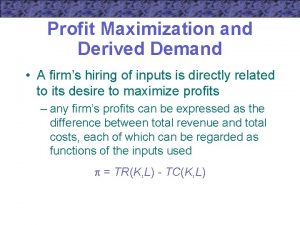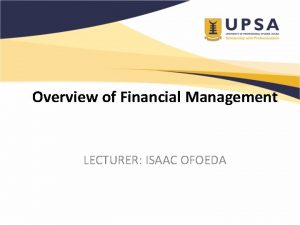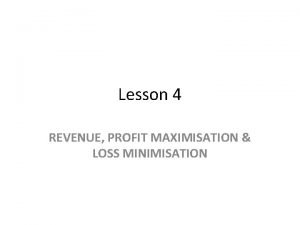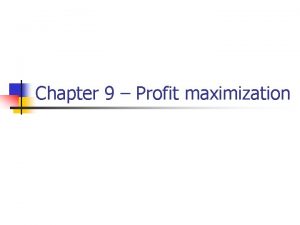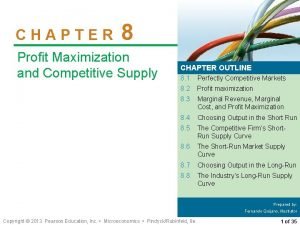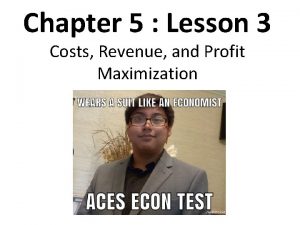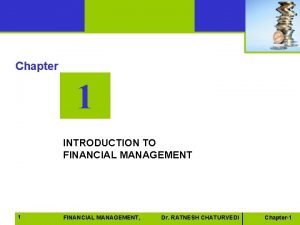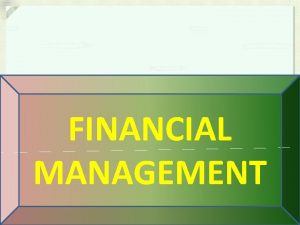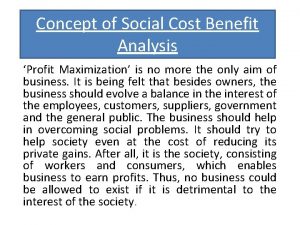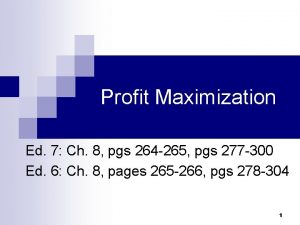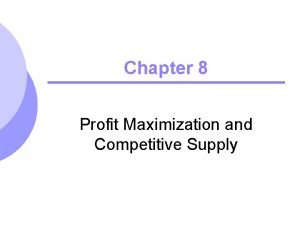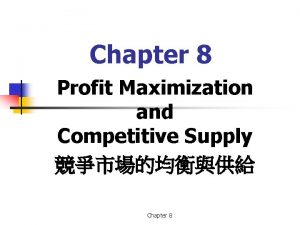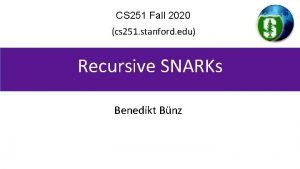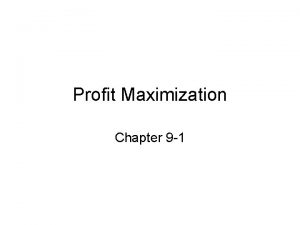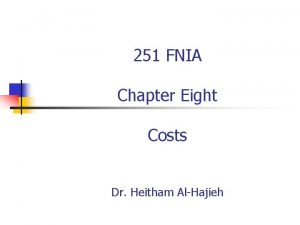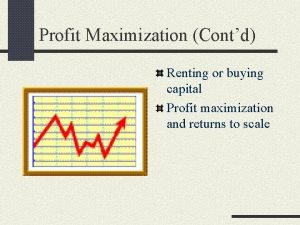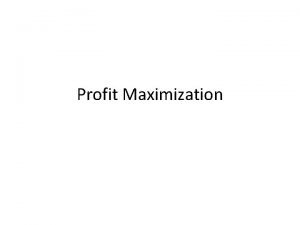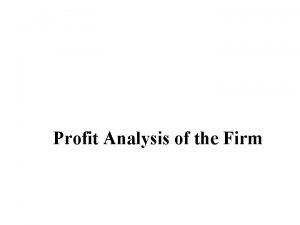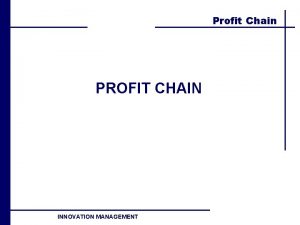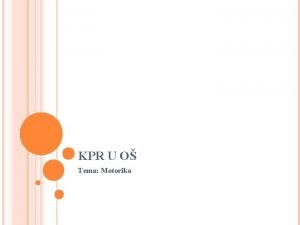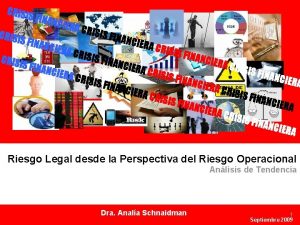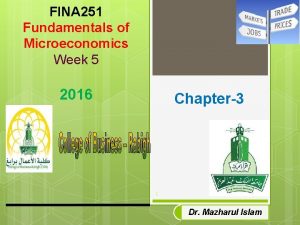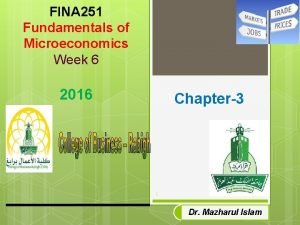251 FINA Chapter Nine Profit maximization Dr Heitham


















- Slides: 18

251 FINA Chapter Nine Profit maximization Dr. Heitham Al-Hajieh

Profit maximization n n Economic profit = total revenue - all economic costs Economic costs include all opportunity costs (explicit and implicit).

Economic vs. accounting profit n n n economic profit = total revenue - all economic costs accounting profit = total revenue - all accounting costs include only current or historical explicit costs, not implicit costs

Economic vs. accounting profit n n n the difference between economic cost and accounting cost is the opportunity cost of resources supplied by the firm's owner. the opportunity cost of these ownersupplied resources is called normal profit is a cost of production.

Economic vs. accounting profit n n If the owners of a firm economic profits, they are receiving a rate of return on the use of their resources that exceeds that which can be received in their nextbest use. In this situation, we'd expect to see other firms entering the industry (unless barriers to entry exist).

Economic vs. accounting profit n n If a firm is receiving economic losses (negative economic profits), the owners are receiving less income than could be received if their resources were employed in an alternative use. In the long run, we'd expect to see firms leave the industry when this occurs.

Economic profits = 0 n If economic profits equal zero, then: n n n owners receive a payment equal to their opportunity costs (what could be received in their next-best alternative), no incentive for firms to either enter or leave this industry, accounting profit = normal profit.

Economic profit n n Economic profit = total revenue - economic costs when output rises, both total revenue and total costs increase (with a few exceptions that will be discussed in later chapters) profits increase when output increases if total revenue rises by more than total costs. profits decrease when output rises if total costs rise by more than total revenue

MR & MC n n the additional revenue resulting from the sale of an additional unit of output is called marginal revenue (MR) the additional cost resulting from the sale of an additional unit of output is called marginal cost (MC)

MR > MC n n If marginal revenue exceeds marginal cost, the production of an additional unit of output adds more to revenue than to costs. In this case, a firm is expected to increase its level of production to increase its profits.

MR < MC n n n If marginal cost exceeds marginal revenue, the production of the last unit of output costs more than the additional revenue generated by the sale of this unit. In this case, firms can increase their profits by producing less. A profit-maximizing firm will produce more output when MR > MC and less output when MR < MC.

MR = MC n n If MR = MC, however, the firm has no incentive to produce either more or less output. The firm's profits are maximized at the level of output at which MR = MC.

Marginal revenue n n Marginal revenue = additional revenue received from the sale of an additional unit of output. In mathematical terms:

Firm facing a perfectly elastic demand curve If demand is perfectly elastic, MR = P

Firm facing a downward sloping demand curve A firm facing a downward sloping demand curve must lower its price if it wishes to sell additional units of this good. MR = ?

Demand MR for a firm facing a downward sloping demand curve

Profit maximization Profit = (profit per unit) x # of units = (P – ATC) x Q

Profit maximization
 Monopsony profit maximization
Monopsony profit maximization Limitations of profit maximization
Limitations of profit maximization Profit maximization
Profit maximization Normal profit vs economic profit
Normal profit vs economic profit Profit maximization and competitive supply
Profit maximization and competitive supply Cost revenue and profit maximization guided reading
Cost revenue and profit maximization guided reading Module 53 featured worksheet profit maximization
Module 53 featured worksheet profit maximization Wealth maximization
Wealth maximization Definition
Definition Benefits of profit maximization
Benefits of profit maximization Profit maximizing firm
Profit maximizing firm Profit maximization
Profit maximization Profit maximizing output
Profit maximizing output Profit maximization and competitive supply
Profit maximization and competitive supply Economic profit vs accounting profit
Economic profit vs accounting profit Post acquisition profit is which profit
Post acquisition profit is which profit 15-251
15-251 Hino a vida tem tristezas mil
Hino a vida tem tristezas mil Cs 251 stanford
Cs 251 stanford
